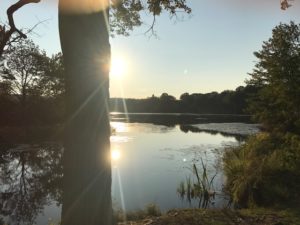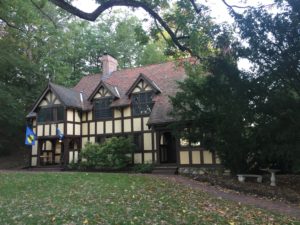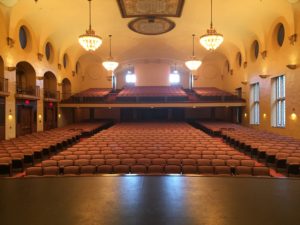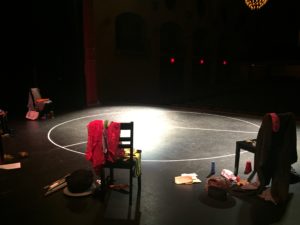By Tricia Kelly
As we leave Houston and the end of our first performance and teaching week, what have we learned?
First and foremost, it was a relief to find that we have a show that works with audiences. Until you do the first show, you’re never quite sure.
The Houston audiences have laughed and occasionally cried and given us genuinely rousing applause.
They’ve also been unbelievably generous in their hospitality. We’ve eaten Mexican, Pizza and had a wonderful BBQ at Fred’s uncle and aunt’s home who invited us out to watch the SuperBowl – a real American experience.
The biggest revelation for all of us, but maybe especially for me, has been to realise that what we thought of as a problem back in our rehearsal room in London – dealing with the transitions between characters when we are playing more than one in the same scene – is in fact one of the very things that the audience loves most. It’s part of the style and fabric of AFTLS work and the thing that makes the shows unique.
I’m still working to improve my transitions between Lear & Cornwall – I find myself getting too caught up in Lear and not nimble enough in my changes- but hopefully I’m a lot better than I was.
Jon, Richard, Fred and Ffion have lots more of them and are becoming really expert at the ease and wit with which they change characters.
We have all had delighted laughs at a transformation amid a really serious scene followed by silent concentration at the story unfolding. It’s gratifying when it happens.
Playing the part of Lear is a challenge every time. So many words, so much anger and explosive rage – especially in the first half. How to calibrate the playing of this in a way that isn’t just an exhausting series of rants for both myself and the audience is something I’m still exploring. Finding as many different shades as possible is one of my missions – always remembering that Lear has to have had loveable qualities to earn the devotion that makes Kent risk his life to follow him in disguise and Cordelia to want to rescue him.
But the fact remains he is a very angry man…. and playing him takes a lot of stamina.
I’m finding that I have to protect my energy and sometimes that means I need to withdraw and be quiet. Most of the company are less than half my age and can recover much more quickly!
Back in South Bend this week for our Notre Dame performances feels like coming home. We’ve already rehearsed there and we know the people and the campus.
Each week of the tour will have a different character, without a doubt, and that’s part of the joy of this tour.
Many adventures await. Blow winds…..




